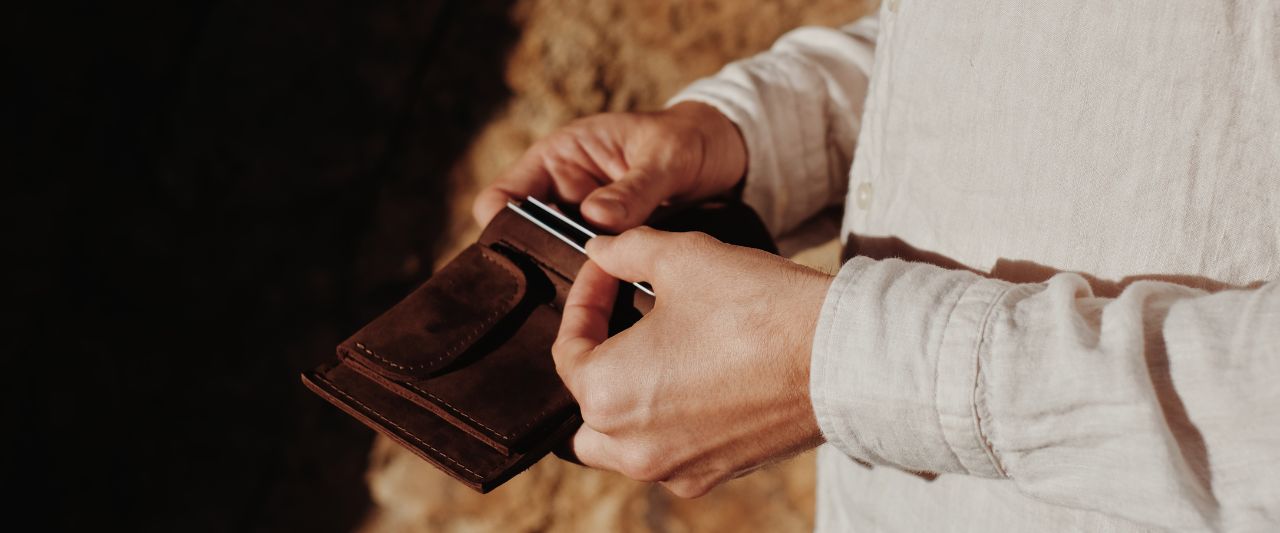Traditional Bulky Wallets vs. Slim Front Pocket Wallets:
A Comparative Analysis
In the evolving landscape of personal accessories, the choice between a traditional bulky wallet and a slim front pocket wallet has become a subject of practical and aesthetic consideration. This article delves into various aspects of both types of wallets, providing a comprehensive comparison to assist individuals in making an informed choice.
Historical Context and Evolution
Traditional bulky wallets have been a staple in men's fashion for decades, symbolizing status and reliability. Initially designed to accommodate cash, multiple credit cards, identification documents, and sometimes even photographs, these wallets were more than just a utility; they represented a man's micro-universe carried in their back pocket.
On the other hand, slim front pocket wallets are a relatively new phenomenon. Emerging as a response to the minimalist and convenience-driven lifestyle, these wallets cater to the essentials, reflecting a shift towards a more streamlined and lightweight approach to personal belongings.
Design and Material
Bulky wallets are typically made from leather, denoting durability and a classic appearance. Their design allows for a substantial number of compartments, often leading to an overstuffed appearance. They usually feature multiple card slots, a coin pouch, and separate sections for bills and receipts.
Conversely, slim wallets embrace a minimalist design. Often crafted from the same high-quality leather as their bulkier counterparts or from modern materials like carbon fiber or aluminum, they offer a sleek look. These wallets usually have limited space, with a few card slots and a central compartment for bills.
Comfort and Convenience
The most significant advantage of slim wallets is the comfort they offer, especially when carried in the front pocket. They reduce the bulk and eliminate the discomfort that can come from sitting on a bulky wallet. This aspect is not just about comfort but also about health, as chiropractors often link back pain to carrying bulky wallets in the back pocket.
In contrast, traditional wallets, when overfilled, can be uncomfortable to sit on and may even misalign the spine over time. Additionally, carrying a wallet in the back pocket can pose security risks, making it an easier target for pickpockets.
Capacity and Organization
Bulky wallets excel in their capacity to hold numerous items. For individuals who need to carry multiple cards, receipts, and identification documents, traditional wallets are more accommodating. However, this advantage can quickly turn into a drawback as it encourages hoarding unnecessary items, leading to clutter.
Slim wallets, with their limited space, force users to prioritize what they carry, contributing to a more organized and efficient lifestyle. The downside is the frequent need to decide what to take and what to leave behind, which can be a significant limitation for those who require more than a few cards and some cash.
Aesthetic and Fashion
Fashion trends have seen a shift towards sleeker and more modern accessories, and slim wallets fit perfectly into this trend. They are more discreet and can complement a variety of styles, from casual to business attire.
Traditional wallets, while bulkier, have a classic appeal that many still find desirable. The look of a well-worn leather wallet carries a certain nostalgia and timeless elegance that appeals to a segment of users who value tradition and the 'tried and true'.
Durability and Longevity
Both types of wallets can be equally durable, depending largely on the quality of materials and craftsmanship. Leather wallets, whether bulky or slim, tend to age beautifully, developing a unique patina over time. Modern materials like carbon fiber add a layer of durability and resistance to wear and tear but might not have the same aesthetic appeal as leather over time.
Security Features
Advancements in wallet design have introduced RFID-blocking technology, which is more commonly found in slim wallets. This feature protects cards from electronic pickpocketing, a growing concern in the digital age.
Traditional wallets, while not inherently equipped with such technology, can be customized to include RFID protection. However, the bulkiness may still remain a security concern in terms of physical theft.
Price Range
The price of both wallets can vary significantly based on brand, material, and craftsmanship. Generally, traditional leather wallets can be more expensive due to the amount of material used. Slim wallets, while potentially less expensive, can reach high prices if made from premium materials or by renowned brands.
Choosing between a traditional bulky wallet and a slim front pocket wallet ultimately depends on individual needs and lifestyle. Those valuing capacity and traditional design might prefer the former, while individuals seeking comfort, minimalism, and modernity might lean towards the latter. In an era where personal expression and functionality are paramount, understanding the nuances of these everyday accessories becomes essential. As lifestyles continue to evolve, so will the design and functionality of wallets, making them not just a practical item but a statement of personal style and preference.



